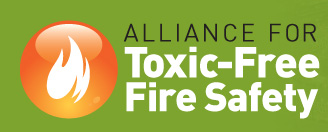  |
|||
May 23, 2012 Toxic Flame Retardant Chemicals Found on Toddlers’ Hands Exposure Higher in Children in Underserved Communities (New York) – Environmental health advocates responded to the new Duke University-led study of 83 North Carolina toddlers, published today in Environmental Health Perspectives, that suggests exposure to potentially toxic flame-retardant chemicals may be higher in non-white toddlers than in white toddlers. “Communities of color are disproportionately impacted by flame retardant chemicals,” says Martha Dina Arguello from Physicians for Social Responsibility – Los Angeles, ”and this peer reviewed study virtually begs for new chemical regulations to stop further exposure to chemical threats. The Toxic Substance and Control Act of 1976 needs to be overhauled immediately to ensure our health is protected.” Janette Robinson Flint, from Black Women for Wellness, says, “Toddlers ingest more dust, which is shockingly contaminated with flame retardant chemicals. These migrate out of the foam in our couches, car seats, strollers, and other products and end up in our children.” This month The Chicago Tribune ran a damning four-part investigative series on flame retardant chemical makers. They describe the corrupt and deceptive efforts of corporations that have led to near ubiquitous exposure to these chemicals which provide no meaningful fire safety benefit. “Learning disabilities, reproductive problems, and cancer are among the adverse health impacts from halogenated flame retardant chemicals,” says Mark Mitchell, MD. MPH, from the National Medical Association. “They are also endocrine disruptors and could play a role in rising rates of endocrine disorders such as obesity and diabetes.” Toddlers between the ages of 12 and 36 months were tested for levels of polybrominated diphenyl ethers (PBDEs) by Duke University scientists, led by Heather Stapleton, PhD assistant professor of environmental chemistry at Duke University’s Nicholas School of the Environment. Kathleen A. Curtis with Alliance for Toxic Free Fire Safety says, “Despite bans on some of these chemicals, they keep introducing dangerous replacements like chlorinated tris. New York is considering a tris ban.” “Just when you think that we are turning the page on the era of separate but unequal a study like Heather Stapleton’s reminds you that toxic burdens and the health disparities they cause in communities of color are still a civil rights battle yet to be won. I hope the NAACP and the Urban League take note of studies like this and get in the fight to protect the health of all children, but especially children of color in New York State before they are too sick or too dead,” adds Cecil Corbin-Mark from WEACT for Environmental Justice, Harlem. “Due to an obsolete California regulation, flame retardant chemicals have been, de facto, forced into our nation’s furniture and baby products containing foam; these are persistent and toxic chemicals that offer no meaningful fire safety benefit and expose our families to needless chemicals” adds Judy Levin with Center for Environmental Health.“It is disturbing that PBDEs were detected in 100% of serum and dust samples and 98% of the handwipe samples even though these substances have been banned or restricted for years. Now the 'chemical cousins' of these problematic chemicals have been substituted and children are still being exposed. It is time to stop the toxic shell game.”
|
|||




